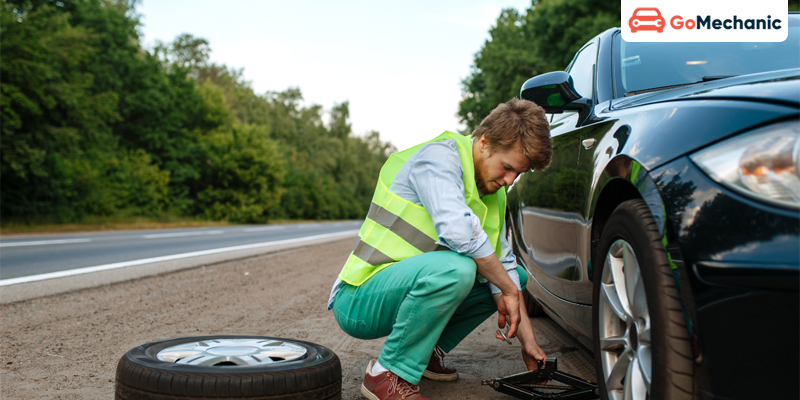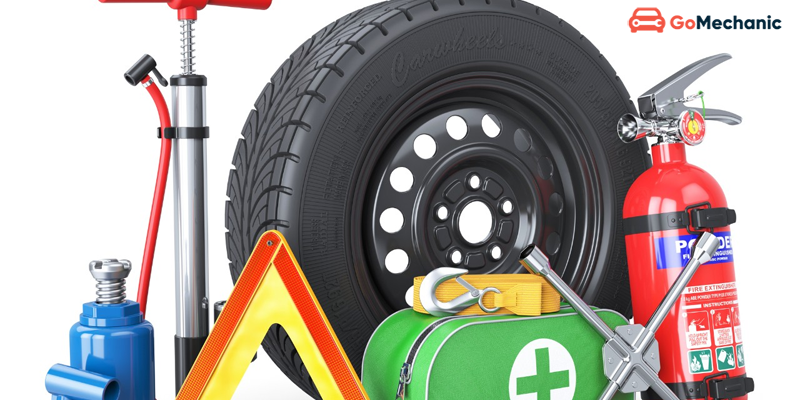Driving can be an unpredictable satisfaction as it will provide everyone with open class fun and the surprising challenges that come with it. Emergencies can occur without warning, including an element of miracle that every driving force must be prepared for. The key to staying safe on the road is thorough organization, which no longer includes the most adept of having the right tools and information, but additionally information, the way to properly respond to unique and unforeseen situations. By anticipating capability issues and understanding the appropriate actions to take, drivers can navigate these challenges more smoothly and maintain their safety and the safety of others.
Flat tires

A flat tire is one of the most common and unexpected incidents drivers face on the road, often caused by sharp objects, wear and tear, or improper inflation.
Causes of a Flat Tire
- Punctures from Sharp Objects:
- Nails, Screws, or Glass: These can easily puncture the tire, leading to a rapid loss of air.
- Road Debris: Sharp objects left on the road can cause unexpected punctures.
- Wear and Tear:
- Tread Wear: Over time, the tread on tires wears down, making them greater at risk of harm.
- Ageing Tires: Tires have a limited lifespan, and older tires are more likely to broaden cracks and weaknesses.
- Improper Inflation:
- Under-Inflation: Tires that are not inflated to the endorsed pressure can overheat, inflicting a blowout.
- Over-Inflation: Excessive strain can make tires more prone to bursting, mainly when driving over potholes or difficult terrain.
- Road Conditions:
- Potholes and Uneven Surfaces: Hitting potholes at high speeds can reason instantaneous damage to tires.
- Construction Zones: Driving via areas with ongoing creation can disclose tires to sharp objects and difficult surfaces.
When a tire is going flat, you can sense a sudden lack of balance, hear a thumping noise, or see a dashboard caution. Remaining calm and taking immediate action to drag over thoroughly is vital.
Engine malfunctions
Engine problems can be daunting, leaving you feeling stuck and confused. First, you may notice a warning light on the dashboard, unusual noises like knocking or screeching, or even smoke coming from the engine. Other symptoms include an unexpected loss of strength, severe inactivity, or a burning odor. These issues can be a concern, especially with large visitors or in foreign areas. Staying calm is important to ensure your protection and to make informed decisions while you wait for professional help.
- Pull Over: Once you realize the engine problem, find a safe proximity to pull over.
- Turn off the engine: Avoid further damage by turning off the engine.
- Call for help: Contact roadside assistance or a towing service provider.
Overheating
Engine overheating is a serious problem that could cause massive and expensive damage if not dealt with immediately. The first signs and symptoms are likely to be a thermometer rising into the purple quarter or a mild warning indicating that the engine is simply too warm. You may notice steam coming from under the hood or a burning smell, which can be particularly alarming. It is important to act quickly to avoid further damage:
- turn off the air conditioning to reduce the engine’s load
- pull over to a safe location
- turn off the engine to let it cool down
- Once it’s safe, check the coolant levels and top up if necessary.
Dead battery
A dead battery can leave you stranded on the street, specifically if you are in a remote location or in some phase of inclement weather. Common signs include the engine not starting, lights dimming, and electrical structures becoming unresponsive. This situation can be particularly hectic and uncomfortable, disrupting your plans and leaving you feeling helpless. Dead batteries are regularly caused by leaving lights on, excessive temperatures, or battery aging. Understanding the severity of this difficulty is essential because it can manifest itself all at once, so it is important to recognize the way to deal with it correctly and appropriately to get you on your way as quickly as possible.
- Jumper Cables: Connect the battery to any other car battery using the cables.
- Follow the correct procedure: Make sure the connections are tight and follow the best order to avoid sparks.
- Start the Engine: Once done, start the vehicle and let it run to recharge the battery.
Running out of gas
Running low on gas in a car can result in numerous significant signs and symptoms, including mild low throttle warning, engine sputtering, sluggish lack of power, and stalling. You may also experience unresponsive throttle and hear unusual noises from the fuel pump. Recognizing these signs early will help you refuel in time and avoid getting stuck.
- Keep calm: Don’t panic; check your environment.
- Call for help: Call a roadside assistance provider or a friend to get you fuel.
- Walk to a gas station: If it is safe to do so, you can walk to the nearest gas station.
Brake failure
Brake failure in use can be terrifying. Common signs and symptoms include an unresponsive brake pedal, screeching or squealing noises, and an extended stopping distance. Additionally, you may notice a brake warning light on the dashboard on a newer car. Understanding these signs will allow you to take immediate action to prevent accidents and ensure your safety.
- Downshifts: Use lower gears to decrease the speed of the car gradually through engine braking.
- Pump the brakes: Try to depress the brake pedal to regain tension.
- Use the handbrake: Pull the handbrake up gradually.
- Find a safe place: Head to a safe area and avoid the car
-
Stuck in mud or snow
Getting stuck in snow or dust can be irritating, especially in adverse weather conditions. Your car’s wheels could normally spin without gaining traction, sink into mild terrain, or be unable to move forward or backward. You may notice a loss of steering or difficulty steering.
- Don’t Spin the Wheels: Spinning can dig you deeper.
- Use traction aids: Place mats, branches or gravel under the tires to provide traction.
- Rock the Car: Move between force and opposite to create momentum.
Accidents and collisions
Accidents and collisions are surprising events that can be attributed to elements such as errors caused by momentum or road conditions, causing engines to collide with objects or different vehicles. They lead to property damage, accidents and potential fatalities. Responses include injury assessment, exchange of statistics, and immediate contact of emergency offers. Preventive measures such as driving safety and obeying traffic laws help reduce the dangers on the street.
- Injury Check: Make sure everything is safe and call for medical help if necessary.
- Move to safety: If possible, move cars away from the traffic.
- Information Exchange: Share contact and coverage information with the other driver.
- Document the scene: Take snapshots and notes for insurance purposes.
Tips for first aid

Knowing basic first aid can save a life:
- Take a first aid kit with you: Always have a first-aid kit in the car.
- Learn CPR: Basic CPR skills can be critical in emergencies.
- Treat Minor Injuries: Clean and bandage wounds to avoid contamination.
Essentials Emergency Kit
An emergency kit can make a big difference:
- Tools and equipment: Including connector, jumper cables and flashlight.
- First aid needs: Bandages, antiseptics and painkillers.
- Other essentials: Water, non-perishable food and a blanket.
Conclusion
Road emergencies can be traumatic, but being organized can make all the difference. By following the advice and recommendations in this complete guide to protection, you can confidently deal with common emergencies and keep yourself and others safe on the street.
Stay safe and powerful with confidence!





